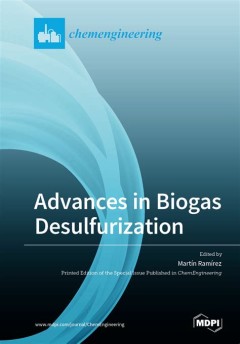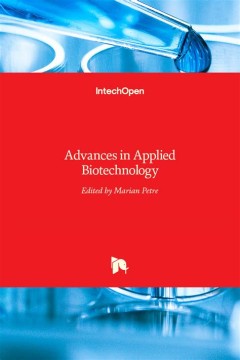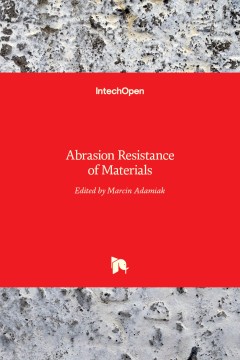Filter by

Advances in Biogas Desulfurization
Global concern about climate change caused by the exploitation of fossil fuels is encouraging the use of renewable energies. For instance, the European Union aims to be climate neutral by 2050. Biogas is an interesting renewable energy source due to its high calorific value. Today, biogas is mainly used for the production of electricity and heat by a combined heat and power engine. However, bef…
- Edition
- -
- ISBN/ISSN
- 9783039286607
- Collation
- 106 hlm; ill., lamp.,
- Series Title
- -
- Call Number
- -

Advances in Applied Biotechnology
Biotechnology is the scientific field of studying and applying the most efficient methods and techniques to get useful end-products for the human society by using viable micro-organisms, cells, and tissues of plants or animals, or even certain functional components of their organisms, that are grown in fully controlled conditions to maximize their specific metabolism inside fully automatic bior…
- Edition
- -
- ISBN/ISSN
- 9789535151760
- Collation
- 290 hlm; ill., lamp.,
- Series Title
- -
- Call Number
- -

Advancements in Algal Biofuels Research - Recent Evaluation of Algal Biomass …
Algae biomass has enormous potential to produce fuels and value-added products. Algae-derived biofuels and bioproducts offer great promise in contributing to U.S. energy security and in mitigating the environmental concerns associated with conventional fuels. Algae's ability to grow in low quality water/wastewater and to accumulate lipids has encouraged scientists to investigate algae as a medi…
- Edition
- -
- ISBN/ISSN
- 9782889451982
- Collation
- 81 hlm; ill., lamp.,
- Series Title
- -
- Call Number
- -

Advanced Theranostic Nanomedicine in Oncology
Despite the vast and increasing scientific literature on the treatment of malicious diseases such as cancer, we are still far to accomplish most of the current unmet clinical desiderata. A special interest in the biomedical field has been recently directed towards "theranostic" devices, aiming at combining diagnostic and therapeutic functionalities into a single platform, and thus enabling both…
- Edition
- -
- ISBN/ISSN
- 9782889636211
- Collation
- 187 hlm; ill., lamp.,
- Series Title
- -
- Call Number
- -

Advanced Polymers for Biomedical Applications
Polymers are the largest and most versatile class of biomaterials, being extensively applied for therapeutic applications. From natural to synthetic polymers, the possibilities to design and modify their physical-chemical properties make these systems of great interest in a wide range of biomedical applications as diverse as drug delivery systems, organ-on-a-chip, diagnostics, tissue engineerin…
- Edition
- -
- ISBN/ISSN
- 9783036546131
- Collation
- 432 hlm,: ill, lamp; 21 cm
- Series Title
- -
- Call Number
- -

Advances in the Regulation and Production of Fungal Enzymes by Transcriptomic…
This eBook is a collection of articles from a Frontiers Research Topic. Frontiers Research Topics are very popular trademarks of the Frontiers Journals Series: they are collections of at least ten articles, all centered on a particular subject. With their unique mix of varied contributions from Original Research to Review Articles, Frontiers Research Topics unify the most influential researcher…
- Edition
- -
- ISBN/ISSN
- 9782889630530
- Collation
- oer.unej.ac.id
- Series Title
- -
- Call Number
- -

Abrasion Resistance of Materials
Abrasion is the primary type of wear in almost all fields of industry. It is particularly relevant to the longevity of pipelines and pumps and to almost all processing industries and applications where a constant interface exists with abrasive substances such as dust, sediments, or fluids with mineral particles. The performance of systems can be degraded depending on the properties of abrasive …
- Edition
- -
- ISBN/ISSN
- 9789535103004
- Collation
- oer.unej.ac.id
- Series Title
- -
- Call Number
- -

Introduction to Development Engineering : A Framework with Applications from …
- Edition
- -
- ISBN/ISSN
- 978-3-030-86065-3
- Collation
- -
- Series Title
- -
- Call Number
- -
- Edition
- -
- ISBN/ISSN
- 978-3-030-86065-3
- Collation
- -
- Series Title
- -
- Call Number
- -

Adaptive Dynamic Programming For Chemotherapy Drug Delivery
This open access book focuses on the practical application of Adaptive Dynamic Programming (ADP) in chemotherapy drug delivery, taking into account clinical variables and real-time data. ADP's ability to adapt to changing conditions and make optimal decisions in complex and uncertain situations makes it a valuable tool in addressing pressing challenges in healthcare and other fields. As optimiz…
- Edition
- -
- ISBN/ISSN
- 978-981-99-5928-0
- Collation
- XV, 135
- Series Title
- -
- Call Number
- -

Brain and Human Body Modeling 2020 = Computational Human Models Presented at …
This open access book describes modern applications of computational human modeling in an effort to advance neurology, cancer treatment, and radio-frequency studies including regulatory, safety, and wireless communication fields. Readers working on any application that may expose human subjects to electromagnetic radiation will benefit from this book’s coverage of the latest models and te…
- Edition
- 1
- ISBN/ISSN
- 9783030456238
- Collation
- XI, 407 hlm; ill., lamp.,
- Series Title
- -
- Call Number
- -
 Computer Science, Information & General Works
Computer Science, Information & General Works  Philosophy & Psychology
Philosophy & Psychology  Religion
Religion  Social Sciences
Social Sciences  Language
Language  Pure Science
Pure Science  Applied Sciences
Applied Sciences  Art & Recreation
Art & Recreation  Literature
Literature  History & Geography
History & Geography